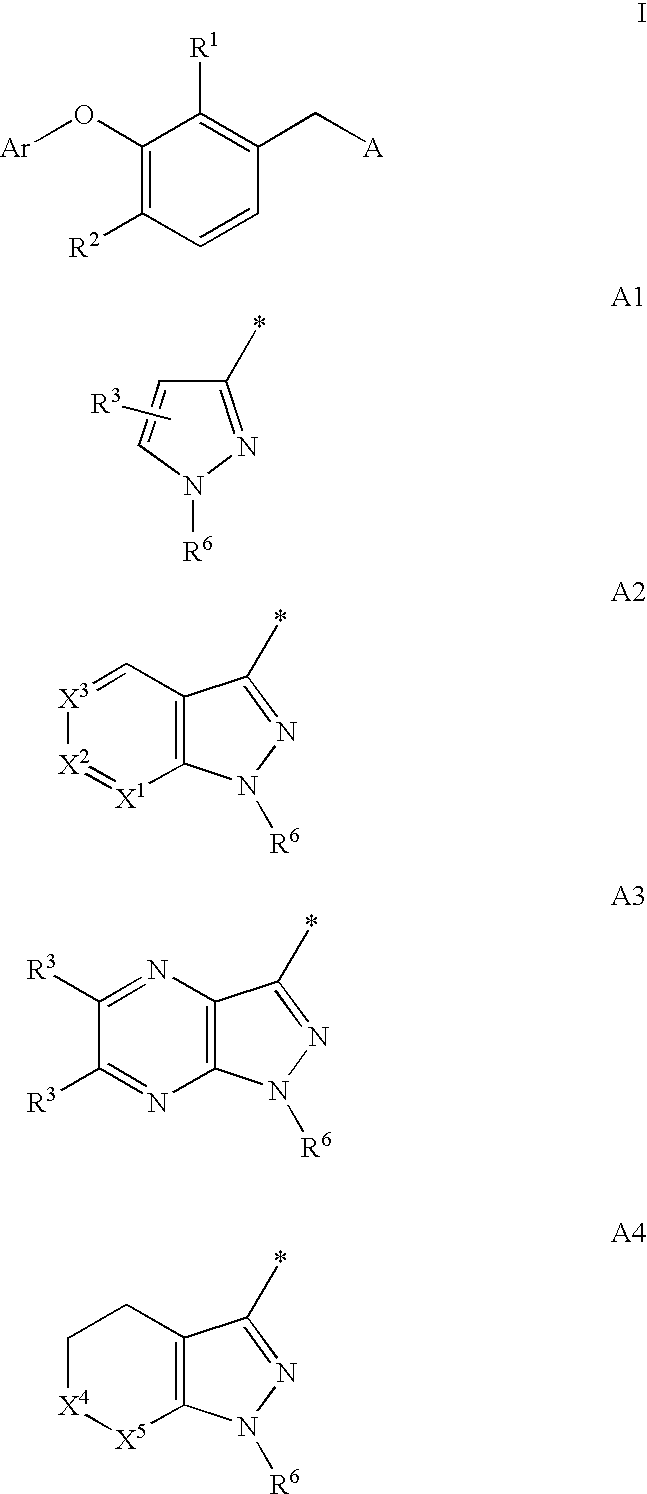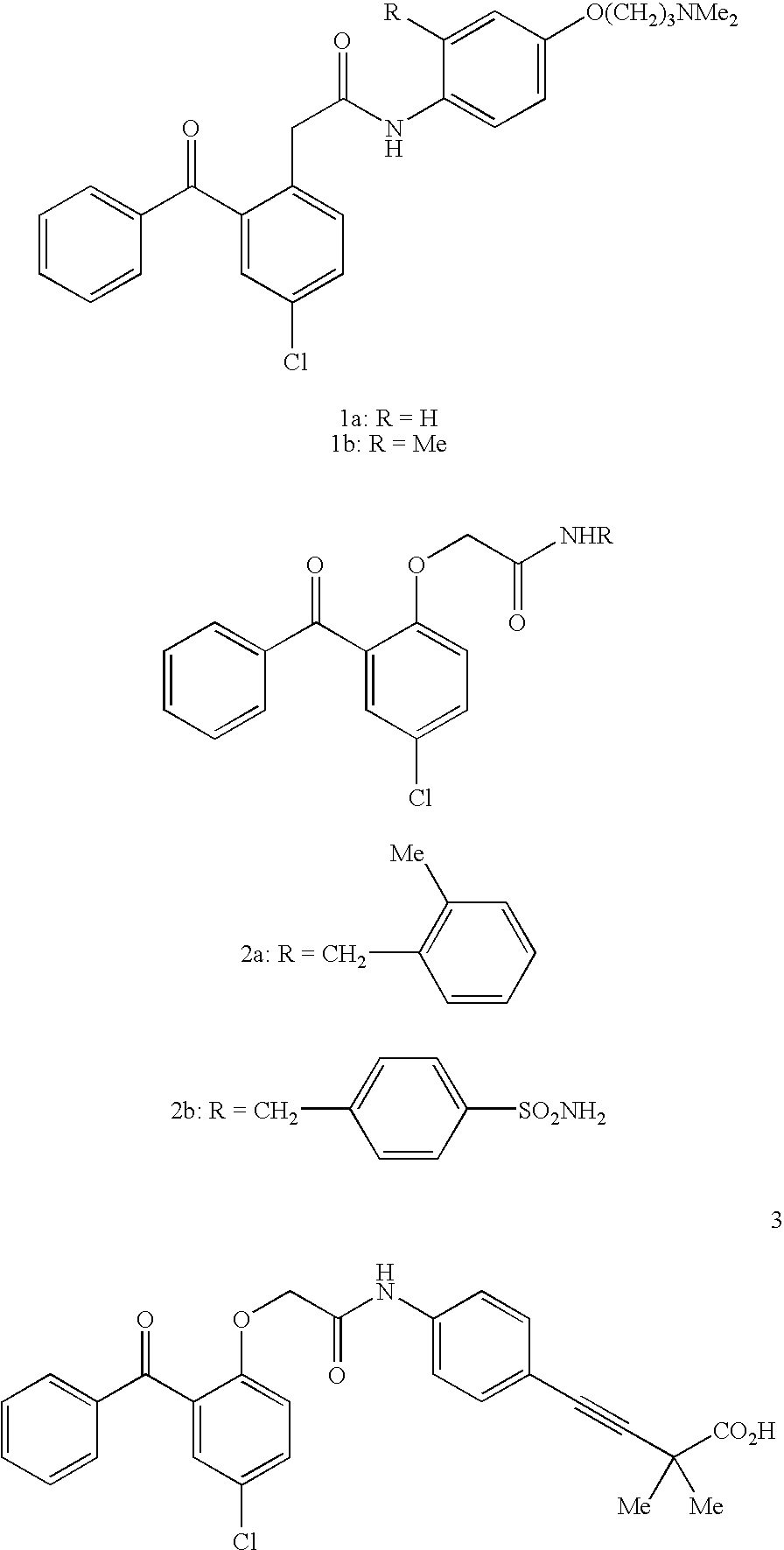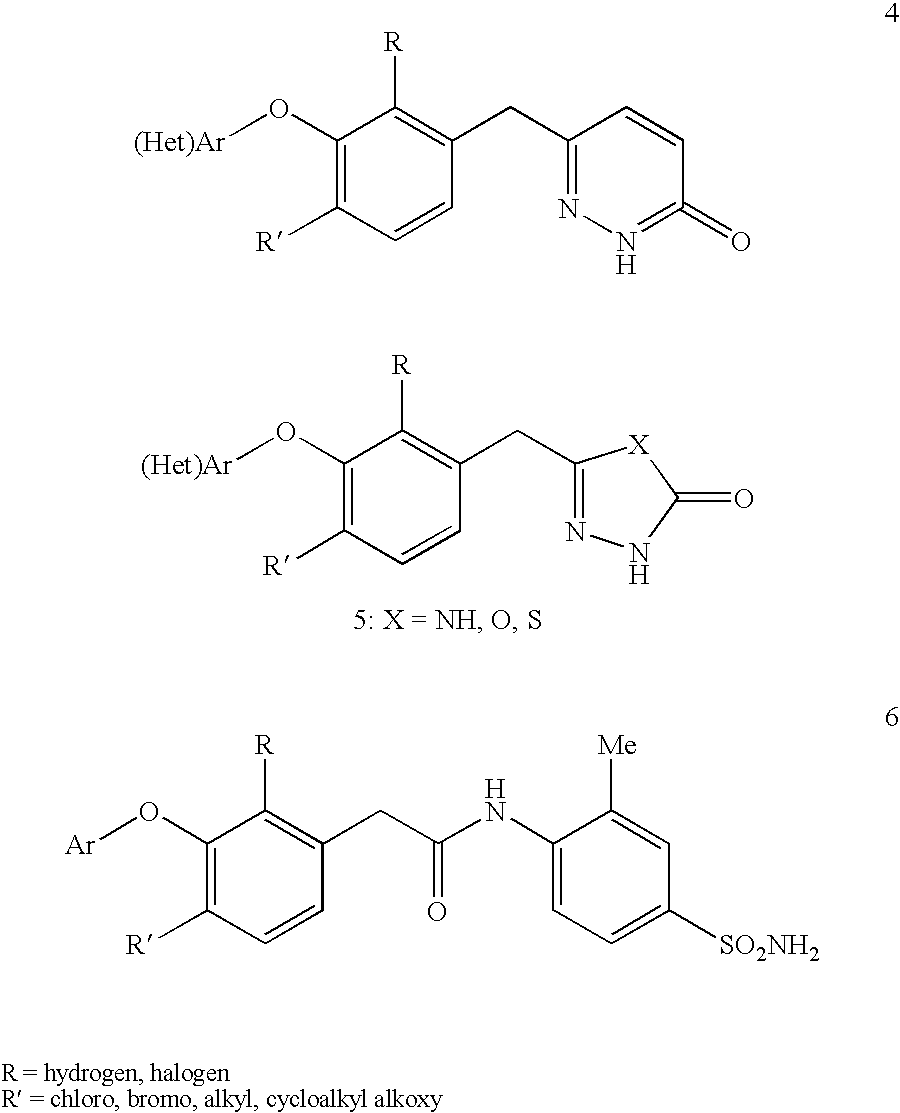Non-nucleoside reverse transcriptase inhibitors
a reverse transcriptase inhibitor and non-nucleoside technology, applied in the field of antiviral therapy, can solve the problems of slowed disease progression, significant therapeutic problems, and high viral load, and achieve the effect of reducing susceptibility to therapy
- Summary
- Abstract
- Description
- Claims
- Application Information
AI Technical Summary
Benefits of technology
Problems solved by technology
Method used
Image
Examples
referential example a
3-Aryloxyphenylacetic acids
[4-Chloro-3-(3-chloro-5-cyano-phenoxy)-2-fluoro-phenyl]-acetic acid (R-1) and [4-chloro-3-(3-chloro-5-cyano-phenoxy)-2-fluoro-phenyl]-acetyl chloride (R-2)
[0129]
[0130]step 1—A 100 ml round bottom flask was charged under a stream of nitrogen with 3,5-dichlorobenzonitrile (R-3a, 7.0 g, 40.69 mmol) and anhydrous DMF (75 mL). To the solution was added sodium methoxide (2.26 g, 44.76 mmol) and resulting solution was stirred further at RT for 24 h. When the reaction was complete, aqueous 10% HCl added dropwise to the reaction vessel. The crude mixture was extracted with EtOAc and sequentially washed with aqueous acid, water and brine. The EtOAc extracts were dried (Na2SO4), filtered and the solvent was removed in vacuo to afford a crude solid which was recrystallized from hexane / acetone to afford 5.9 g (86%) of R-3b.
[0131]step 2—A 250 mL flask was charged with R-3b (7.0 g, 41.766 mmol) and 2,4,6-collidine (100 mL). The mixture was heated to 170° C., LiI (16.76 g...
example 1
3-Chloro-5-[6-chloro-2-fluoro-3-(5-phenyl-1H-pyrazol-3-ylmethyl)-phenoxy]-benzonitrile (I-4)
[0197]
[0198]3-Chloro-5-[6-chloro-2-fluoro-3-(2-oxo-ethyl)-phenoxy]-benzonitrile (56) can be prepared by reduction of R-5b with diborane and resulting alcohol can be re-oxidized to the alcohol with CrO3-pyridine.
[0199]step 1—To a solution of 56 (0.40 g, 1.2 mmol) in DCM (2 mL) was added a solution prepared by addition of SnCl2 (0.035 g, 0.15 equiv) to a solution of phenyldiazoacetate (0.16 g, 0.9 equiv) in DCM (3 mL). The suspension was stirred at RT overnight, and more SnCl2 (35 mg, 0.15 equiv) was added to the reaction mixture. After 1 h, the solution was poured into water and extracted with EtOAc and the combined organics were washed, dried (Na2SO4), filtered and concentrated. The product was purified by SiO2 chromatography eluting with an EtOAc / hexane gradient (5% to 20% EtOAc) to afford 0.27 g (50%) of 58.
[0200]step 2—Hydrazine monohydrate (0.15 mL, 5 equiv) was added to a solution of 5...
example 2
3-[4-Chloro-3-(3-chloro-phenoxy)-benzyl]-1H-pyrazole (I-2)
[0202]
[0203]step 1—A mixture of the 60a (1.37 g, 4.13 mmol), NBS (1.16 g, 6.5 mmol), and AIBN (39 mgs) in CCl4 (20 mL) was refluxed under N2 for 12 h. The mixture was cooled, filtered and the volatile materials were evaporated. The residue was purified by SiO2 column chromatography eluting with hexanes to provide 1.26 g (74%) of the desired dibromide. The dibromide was dissolved in EtOH (40 mL), and a solution of AgNO3 (2.5 g) in H2O (10 mL) was added. A white precipitate formed immediately, and the mixture was heated to 100° C. for 45 min. The solution was cooled to RT, filtered through CELITE®, and concentrated. The residue was partitioned between EtOAc and water, and the organic layer was dried (Na2SO4), filtered, and concentrated to afford 0.91 g (100%) of 60b.
[0204]step 2—n-BuLi (2 mL of a 1.6 M solution in THF) was added dropwise to a solution of 1-(2-trimethylsilanyl-ethoxymethyl)-1H-imidazole (0.40 g, 2 mmol) in THF (...
PUM
| Property | Measurement | Unit |
|---|---|---|
| Volume | aaaaa | aaaaa |
| Volume | aaaaa | aaaaa |
| Fraction | aaaaa | aaaaa |
Abstract
Description
Claims
Application Information
 Login to View More
Login to View More - R&D
- Intellectual Property
- Life Sciences
- Materials
- Tech Scout
- Unparalleled Data Quality
- Higher Quality Content
- 60% Fewer Hallucinations
Browse by: Latest US Patents, China's latest patents, Technical Efficacy Thesaurus, Application Domain, Technology Topic, Popular Technical Reports.
© 2025 PatSnap. All rights reserved.Legal|Privacy policy|Modern Slavery Act Transparency Statement|Sitemap|About US| Contact US: help@patsnap.com



